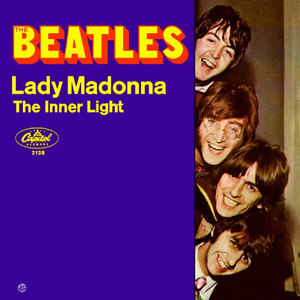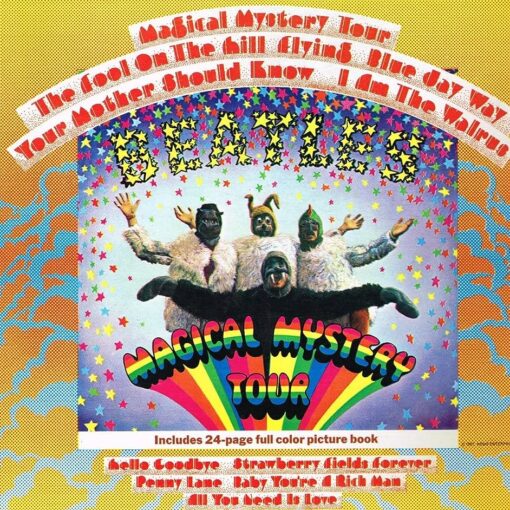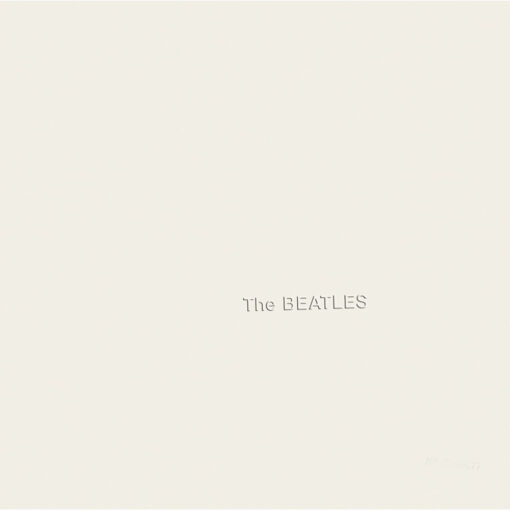- Published in 1968
- Author: Harrison
- Track 6 on “Past Masters Volume 2“
PAUL 1968: “Forget the Indian music and listen to the melody. Don’t you think it’s a beautiful melody? It’s really lovely.”
About “The Inner Light”

“The Beatles’ song “The Inner Light,” authored by George Harrison, made its debut on a non-album single in March 1968, serving as the B-side to the iconic “Lady Madonna“. Notably, it marked Harrison’s inaugural solo composition released on a Beatles single. The track bears testament to the band’s deepening engagement with Transcendental Meditation, a practice they were immersing themselves in while studying under Maharishi Mahesh Yogi in India at the time.
Among Harrison’s Beatles-era repertoire, “The Inner Light” stands as one of three compositions strongly influenced by Indian classical music, alongside “Love You To” and “Within You Without You.” Drawing inspiration from a passage in the Taoist Tao Te Ching, Harrison adeptly married these lyrics to music, guided by Sanskrit scholar Juan Mascaró, who had previously translated the passage in his 1957 work, ‘Lamps of Fire.’
During the January 1968 Wonderwall Music soundtrack sessions in Bombay, Harrison embarked on recording “The Inner Light.” This marked a significant milestone, being the band’s maiden studio session outside of Europe. The track boasts an array of traditional Indian instruments, including sarod, shehnai, and pakhavaj. Aashish Khan, Hanuman Jadev, and Hariprasad Chaurasia were among the accomplished musicians contributing to the piece. Apart from Harrison’s distinctive lead vocals, recorded in London, the Beatles’ sole involvement was in providing harmonious backing vocals.
In the ensuing decade, “The Inner Light” assumed a somewhat elusive status in the band’s discography, making sporadic appearances on compilation albums like Rarities, Past Masters, Volume 2, and Mono Masters. Its enchanting melodies and its ability to evoke a meditative ambiance have earned acclaim from numerous music critics and scholars.
A year following Harrison’s passing, Jeff Lynne and Anoushka Shankar paid tribute to the late musician by performing “The Inner Light” at the Concert for George, a poignant testament to the enduring impact of Harrison’s musical legacy.
Meaning of “The Inner Light”
“The Inner Light” is imbued with profound spiritual and philosophical themes. Its title and lyrics hint at a profound exploration of the inner self, a quest for inner serenity and wisdom. Although the song doesn’t deliver a clear narrative or explicit message, it is widely interpreted as an expression of Harrison’s deepening interest in Eastern spirituality, particularly his engagement with Hinduism and meditation.
This composition encapsulates several key elements of its meaning. Firstly, it suggests a yearning to uncover a deeper, inner understanding of life and the universe. The term “The Inner Light” encapsulates a desire to fathom one’s own consciousness and discover a sense of inner tranquility and enlightenment.
Harrison’s profound fascination with Indian philosophy and spirituality, notably the teachings of the Maharishi Mahesh Yogi, significantly influenced the song. Its lyrics incorporate elements of these teachings, conveying a spirit of introspection and self-discovery.
Released in 1968, “The Inner Light” coincided with The Beatles’ sojourn in India to study Transcendental Meditation with Maharishi Mahesh Yogi. As such, the song can be viewed as an artistic expression of the band’s experiences and the insights they gleaned during this transformative period.
While the song draws inspiration from Eastern spirituality, its themes are universal. It resonates with the universal human aspiration to find purpose, inner peace, and a deeper connection to the world and one’s own self.
In essence, “The Inner Light” mirrors George Harrison’s personal spiritual odyssey and his fascination with Eastern philosophy and meditation. Its lyrics encourage listeners to embark on their own journey of self-discovery and seek inner enlightenment and tranquility. The song encapsulates the broader cultural and spiritual exploration that characterized the 1960s, particularly among artists and musicians.
Personnel
The Beatles
- George Harrison – lead vocals, direction
- John Lennon – harmony vocals
- Paul McCartney – harmony vocals
Additional musicians
- Aashish Khan – sarod
- Hanuman Jadev – shehnai
- Hariprasad Chaurasia – bansuri
- Mahapurush Misra – pakhavaj
- Rijram Desad – harmonium
- uncredited – tabla tarang


